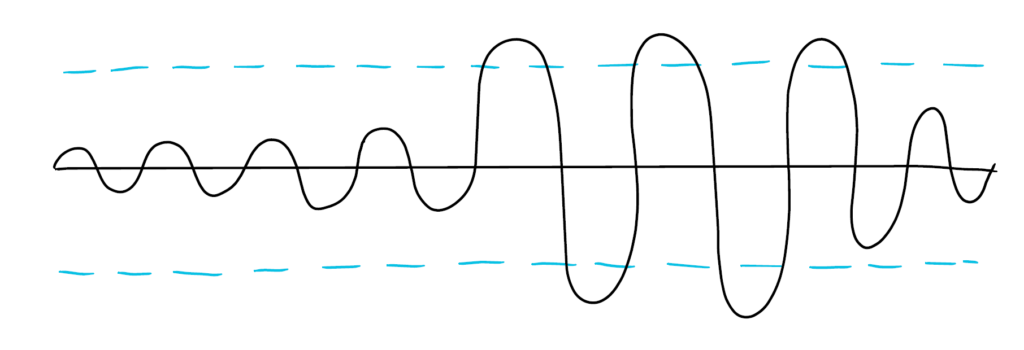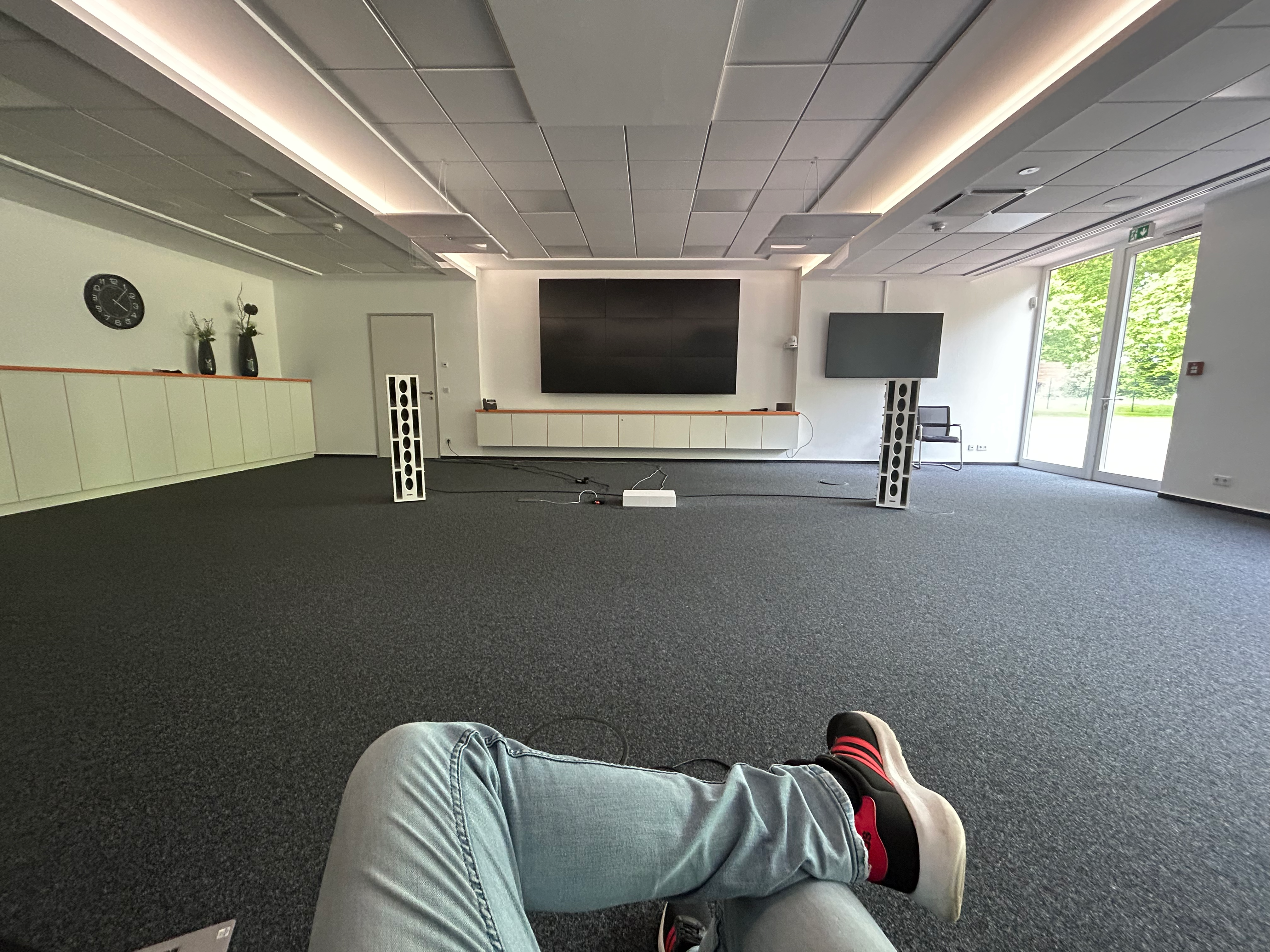What are limiters?
If you spend some time on the subject of PA, sooner or later you stumble upon the subject of limiters. But what does they actually do?
A limiter does exactly what its name suggests: It limits. More precisely, it limits a signal. In this case, the output signal, which is being sent by the limiting device to the amplifier. This job is usually done by a controller, a crossover with a corresponding function, or a dedicated device.
To explain it more clearly, here is a graph. The blue dashed line defines the limiter threshold, the black line the signal. It gets louder as the DJ is turning up the volume on the mixer.

As long as the limiter is not armed, the signal is not limited.
In practice, there are 2 interesting limiters, both of which are important and have different purposes: The RMS limiter and the peak limiter. But to understand the meaning of the different limiters, it is easier to realize first, what threats exist to our loudspeakers during a party.
Slow cooking: The thermal death
The voice coil of a loudspeaker is nothing more than a wire that gets hot when electricity flows through it. Whether the power is distributed evenly over time like noise or the sinusoidal signal example from my last post is not relevant.
📝 Note: How much power can flow through the voice coil on average is defined by the so-called Root Mean Square (short: RMS).
Thus, the RMS specification actually represents the thermal power handling capability of a loudspeaker. A thermal overload occurs slowly and silently, but can be deadly. The coil will literally melt in case of permanent overload and burn in the magnetic gap of the loudspeaker. The consequences are a terrible smell and an irreparable chassis.
Short tip from me at this point: If your speaker starts to smell during a crazy rave, it’s a sign of a thermal overload coming on, and you should immediately turn down the music to let the speaker cool down. Otherwise, this one will be silent forever.
One last blast: The mechanical death
The job of a loudspeaker chassis is to swing and as a result produce sound. To do so, the chassis will move forward and backward by excursion. If the maximum chassis excursion is exceeded, your speaker will be mechanically damaged. Hence, you should make sure that your speaker does not exceed its peak power limit.
📝 Note: The short-term power limit of a loudspeaker is defined by the peak specification.
Imagine the following situation: You need your PA system for a speech, the hall is very large and crowded and therefore you need a lot of sound pressure so that everyone understands what is being said. Your PA system is set to a high volume level and ready to go.
Suddenly, the performer drops the microphone on the floor and what follows is, in the best case, a deafening blast of noise due to the amplification of exactly this generated signal. In the worst case, this is followed by a ripped loudspeaker chassis that has exceeded its maximum excursion due to this short-term high load. In contrast to thermal damage, such damage can occur very spontaneously (… but is also repairable by so-called recone kits).
Conclusion
So our loudspeaker can die 2 deaths: The thermal death and the mechanical death. And to prevent exactly these, there they are: The limiters.
Which limiter makes more sense in which scenario I will explain in my next post. So stay tuned for more and have a nice day!





I like turtles. 😉